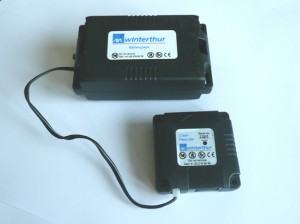Legal Implications for Black Boxes in Semi Trucks

Introduction
Truck accidents in the United States are a serious problem, with over half a million occurring annually, around 5,000 of which involve a fatality. Even more result in property damage and injury, and often it can be difficult to determine the circumstances or fault of the accident in question. However, there is a technology in play now that can change the entire playing field when it comes to the determination of accident circumstances. This technology is called the electronic control module (ECM) or electronic data recorder (EDR).
What is an EDR?

According to the National Highway Traffic Safety Association (NHTSA), an EDR refers to “a device installed in a motor vehicle to record technical vehicle and occupant information for a brief period of time (seconds, not minutes) before, during and after a crash. For instance, EDRs may record (1) pre-crash vehicle dynamics and system status, (2) driver inputs, (3) vehicle crash signature, (4) restraint usage/deployment status, and (5) post-crash data such as the activation of an automatic collision notification (ACN) system. We are not using the term to include any type of device that either makes an audio or video record, or logs data such as hours of service for truck operators. EDRs are devices which record information related to an ‘event.’ In the context of this site the event is defined as a highway vehicle crash.”
ECMs and EDRs are the land-based cousin of an aircraft’s flight data recorder or “black box,” with which most people are now familiar. While the ECM black boxes in all trucks are not exactly the same as that in a commercial airplane, black boxes in commercial trucks can provide vital information that can help clarify the circumstances of an accident in a court case. Especially in the case of accidents involving other passenger vehicles or damage to property, these black boxes and the data they contain are invaluable tools for building a court case.
Black Box Data
Black box data is both reliable and unbiased, presenting an accurate view of the accident. The black box stores important statistical data such as:
- Speed
- RPM (rotations per minute)
- Braking
- Acceleration rate
- Length of time driving
- Driver identification
- Idle time
- Fuel consumption
- Whether a seatbelt was engaged
- Whether the airbag deployed.
While EDRs are not legally required to be installed in vehicles, ECMs are installed on all fuel-injected engines as a matter of course, and can be used to determine much of the same data. In addition, most automobiles these days have EDRs installed as a matter of course.
How the Data is Used

Evidence extracted from a truck or automobile’s black box is almost universally admissible as evidence in court, and can often serve as a sort of unbiased witness to corroborate the testimony of a client. In general, one of the most important aspects of any case involving a vehicular accident is going to be a reconstruction of the circumstances of the event. The first step in this reconstruction will be the testimony of the involved parties and witnesses; unfortunately, all parties involved in an accident have a vested interest in appearing to be the victim. The data from the black box will often be used by experts to recreate the accident scenario and effectively determine fault. This is especially true in cases where there is significant property damage or personal injury.
Often, the data downloaded from a black box can be utilized by expert witnesses to create computer animations that recreate the accident to verify the circumstances, and which can be extremely persuasive in terms of proving liability. The data can also be used during depositions. In this case, it can help the examination of the involved parties when detailed descriptions of the accident are involved. It can corroborate or challenge the statements of a driver about speed, braking, shifting, mechanical problems and other aspects of the vehicle’s operation immediately before the accident, as well as containing service logs and communications between the driver and his or her dispatch station.
Legal Obligations
Not only is the data from black boxes useful, in almost all cases the preservation of electronic data is required by law. This is the case in the Federal Rules of Civil Procedure as well as the laws of most states. This data must be downloaded and preserved as soon as humanly possible following an incident, because once the vehicle is moved or driven, the data can often be overwritten. Your client can be found liable for penalties and consequences if this data is not preserved.
Summary
All trucks with fuel-injected engines have a black box installed on the engine which can record vital information related to accidents. Downloading this information is important (and often required by law) and it can be used to provide important corroboration or challenges to testimony in determining circumstances and fault in accidents.

